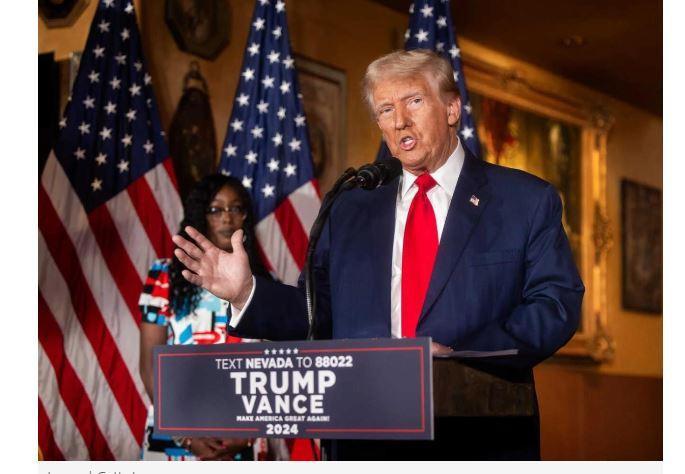In the world of global politics, few figures have garnered as much attention as Donald Trump, the 45th President of the United States. Known for his unconventional style and bold decisions, Trump’s economic proposals have been a key point of discussion, both during his campaign and throughout his presidency. These proposals were a mix of tax reforms, deregulation, trade policies, and infrastructure investments, all aimed at revitalizing the American economy. In this article, we will take a detailed look at the Breakdown of Trump’s Economic Proposals and their lasting impact on the U.S. and global economies.
1. Tax Reforms: The Trump Tax Cuts
One of the cornerstones of Trump’s economic policy was the Tax Cuts and Jobs Act (TCJA) of 2017. This legislation introduced a major overhaul of the U.S. tax code, reducing corporate tax rates from 35% to 21% and offering tax cuts for individuals and small businesses.
Corporate Tax Cuts: The reduction in corporate taxes was designed to make the U.S. more competitive on the global stage. Trump argued that lowering the tax burden on corporations would encourage investment, job creation, and economic growth. The immediate impact saw many corporations repatriating profits from overseas, which contributed to a short-term economic boost.
Individual Tax Cuts: For individuals, the tax brackets were adjusted, and the standard deduction was nearly doubled. While many middle-class Americans benefited from reduced taxes, critics argued that the wealthiest Americans and large corporations were the primary beneficiaries of the reforms.
2. Deregulation: Rolling Back Obama-Era Policies
Trump’s administration made significant strides in deregulation, particularly in industries like energy, finance, and healthcare. The argument for deregulation was that reducing government oversight would spur innovation and economic growth by cutting bureaucratic red tape.
Energy Sector: Trump focused on dismantling many of the environmental regulations put in place by the Obama administration. By promoting energy independence and supporting fossil fuel industries, Trump aimed to lower energy costs and create jobs in coal, oil, and natural gas sectors. However, critics warned of the long-term environmental consequences of these actions.
Financial Deregulation: Trump also sought to relax the Dodd-Frank Act, which was passed in response to the 2008 financial crisis. His administration believed that the strict regulations stifled economic growth, especially for smaller banks. By easing these restrictions, the goal was to increase lending and stimulate business activity.
3. Trade Policies: The Trade War with China
Trump’s trade policies, especially the trade war with China, were among the most controversial aspects of his economic agenda. Trump accused China of unfair trade practices, including intellectual property theft and currency manipulation, and sought to rectify these issues through tariffs.
Tariffs: In an effort to reduce the trade deficit with China, Trump imposed tariffs on hundreds of billions of dollars' worth of Chinese goods. While this move was intended to protect American industries, particularly manufacturing, it also led to retaliatory tariffs from China on U.S. exports, affecting sectors like agriculture and automobiles.
USMCA: Another key trade accomplishment of the Trump administration was renegotiating NAFTA (North American Free Trade Agreement), which was replaced by the United States-Mexico-Canada Agreement (USMCA). The updated agreement aimed to modernize trade relations between the three countries and included provisions to boost American manufacturing and protect intellectual property.
4. Infrastructure Investment: The Elusive Goal
One of Trump’s campaign promises was to invest $1 trillion in American infrastructure, including roads, bridges, and airports. Despite bipartisan support for such a plan, Trump’s infrastructure proposals never fully materialized. While his administration did pass smaller-scale infrastructure bills, the ambitious vision of a large-scale investment remained elusive due to disagreements over funding and priorities.
You Can Also Visit More Letest Blogs : -
Sheikh Hasina Was Best PM For India
SimpliFi Card Issuance In MENA
India’s Grocery Startup Zepto Funding
Conclusion: The Legacy of Trump’s Economic Proposals
Trump’s economic policies were a mixture of bold actions and unfulfilled promises. His tax cuts and deregulation undoubtedly contributed to short-term economic growth, particularly in the early years of his presidency. However, the long-term implications, such as increased national debt and the potential consequences of environmental deregulation, remain subjects of debate.
Moreover, Trump’s trade war with China and his focus on protectionism created uncertainty in global markets and strained relationships with key trade partners. While some industries benefited, others, especially those reliant on global trade, suffered.
In the end, Trump’s economic legacy will continue to be analyzed and debated for years to come, as both supporters and critics assess the full impact of his policies on the U.S. economy and its position in the global landscape.











